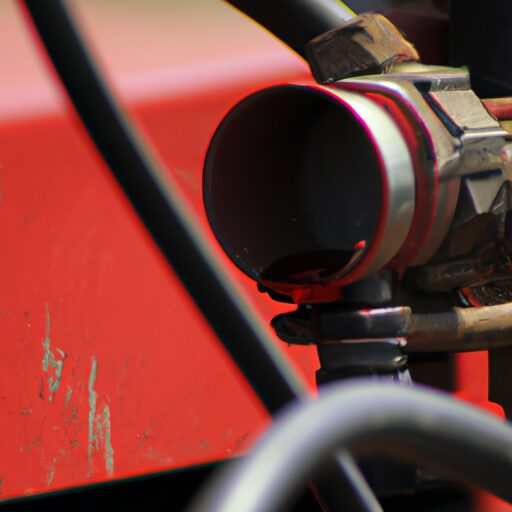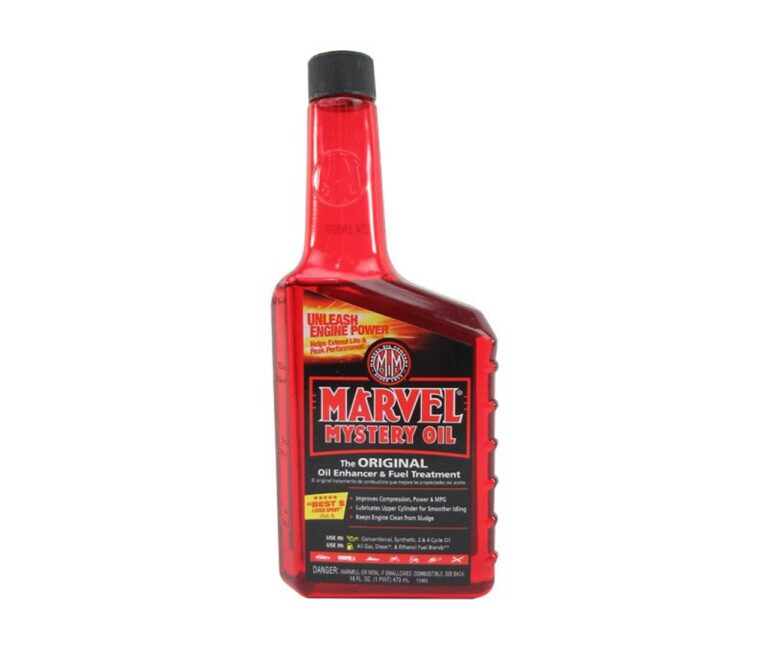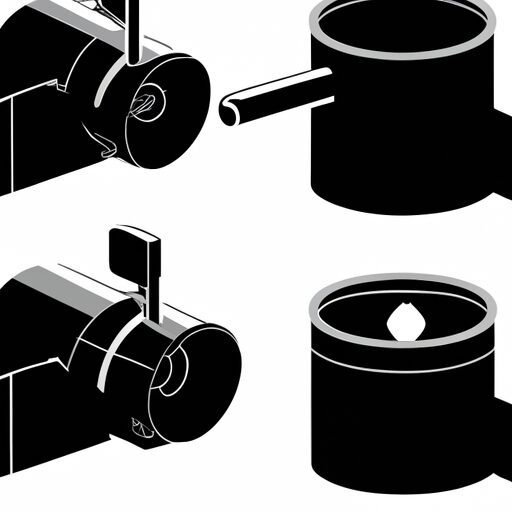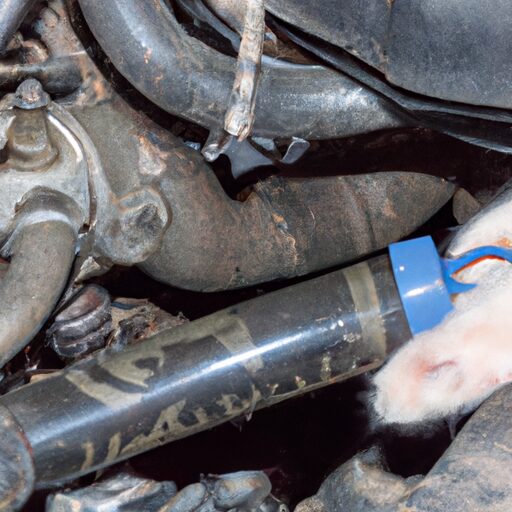How To Check Hydraulic Fluid On Farmall M
The hydraulic system is a crucial component in the operation of the Farmall M tractor, allowing for efficient and precise control of various implements. Regularly checking the hydraulic fluid level ensures that the system functions optimally, preventing potential damage and costly repairs. This article provides step-by-step instructions on how to check the hydraulic fluid on a Farmall M tractor.
To begin, locating the hydraulic fluid reservoir is essential. Once identified, proper preparation of the tractor is necessary before proceeding with any inspection. Removing either the dipstick or view level indicator allows for an accurate assessment of the fluid level within the reservoir. Carefully checking this level is crucial to ensure that it falls within recommended limits.
In cases where adjustments are required, adding or draining hydraulic fluid should be done cautiously to maintain optimal performance. Finally, replacing the dipstick or view level indicator completes this routine maintenance task.
By following these instructions and monitoring fluid levels regularly, operators can ensure smooth operation and longevity of their Farmall M tractors’ hydraulic systems.
Locate the Hydraulic Fluid Reservoir
The Hydraulic Fluid Reservoir on a Farmall M can be located by referring to the owner’s manual or consulting with a professional mechanic. It is essential to identify its location correctly, as it plays a crucial role in the proper functioning of the hydraulic system. Common problems with hydraulic fluid on farm equipment include leaks, contamination, and insufficient levels. Leaks can occur due to damaged seals or hoses, resulting in reduced system performance and potential damage to other components. Contaminated fluid can lead to clogged filters and valves, causing erratic operation and decreased efficiency. Insufficient fluid levels can result in inadequate power transmission and increased wear on hydraulic components.
Maintaining proper hydraulic fluid levels is vital for optimal operation of the Farmall M tractor. This ensures that all hydraulic functions function smoothly without any issues. It also helps prevent costly repairs and downtime caused by equipment failure or damage. To prepare the tractor for checking the hydraulic fluid level, certain steps need to be followed which will be discussed in detail in the subsequent section.
In conclusion, understanding the location of the Hydraulic Fluid Reservoir is essential for maintaining proper hydraulic fluid levels on a Farmall M tractor. By addressing common problems associated with hydraulic fluids on farm equipment and emphasizing their importance, one can ensure smooth operation while avoiding potential issues down the line.
Prepare the Tractor
To properly assess the condition of the hydraulic system, it is vital to first ensure that the tractor is thoroughly prepared for inspection. Before checking the hydraulic fluid on a Farmall M, it is important to follow a draining technique that involves allowing the hydraulic system to cool down completely. This will prevent any potential accidents or injuries due to hot fluid splashing around. Additionally, make sure you have appropriate storage solutions available for any excess fluid that needs to be drained.
Once the tractor has cooled down and you have taken necessary safety precautions, you can proceed with checking the hydraulic fluid level. Begin by removing the dipstick or viewing level indicator located near the reservoir. Wipe it clean with a cloth and reinsert it fully into its housing. Then, remove it again and observe the fluid level on the dipstick or indicator. Ensure that it falls within the recommended range indicated by markings on the dipstick or indicator.
By following these steps in preparing your Farmall M for inspection and using proper draining techniques, you can effectively check and maintain an optimal hydraulic system.
Remove the Dipstick or View Level Indicator
In order to assess the condition of the hydraulic system, it is essential to remove the dipstick or view level indicator. This step allows for a thorough examination of the hydraulic fluid. To begin, locate the dipstick or view level indicator on the tractor. It may be located near the hydraulic reservoir or on top of it. Once identified, carefully remove it from its housing.
Next, check the color of the hydraulic fluid using a flashlight if necessary. The fluid should appear clear and have a light amber color. Any discoloration, such as a milky appearance or darkened hue, may indicate contamination or degradation of the fluid.
Inspecting the fluid color is crucial in determining potential issues within the hydraulic system. A change in color can point towards water contamination, which can cause corrosion and damage to components over time.
After examining the fluid color, transition into checking its level by proceeding to the next section.
Check the Fluid Level
Inspecting the fluid level is an essential step in assessing the overall health of the hydraulic system, ensuring optimal performance and preventing potential damage. To check the fluid level on a Farmall M tractor, follow these steps:
- Position the tractor on a level surface to get an accurate reading.
- Locate the dipstick or view level indicator, which is typically located near the hydraulic pump or reservoir.
- Remove the dipstick or view level indicator carefully, making sure not to spill any fluid.
- Wipe off any excess oil from the dipstick with a clean cloth and reinsert it fully into its housing.
- Withdraw the dipstick again and observe where the oil level falls on it.
- The oil should be within a specified range indicated by markings on the dipstick or view level indicator.
- If the oil is below this range, it indicates a low fluid level, which can lead to poor system performance or damage over time.
- Additionally, check for leaks around fittings and connections as they can also contribute to low fluid levels.
By ensuring proper fluid levels and checking for leaks, you can maintain your Farmall M tractor’s hydraulic system in good condition. Next, we will discuss how to add or drain fluid if necessary without interrupting operation.
Add or Drain Fluid if Necessary
By properly managing the fluid levels in your Farmall M tractor’s hydraulic system, you can ensure its optimal performance and prevent potential damage. It is important to regularly check the fluid level and add or drain fluid if necessary. To add fluid, locate the hydraulic reservoir on the tractor. Remove the cap and use a funnel to pour the recommended hydraulic fluid into the reservoir until it reaches the appropriate level indicated by the dipstick or view level indicator.
If you need to drain fluid from the hydraulic system, there may be a drain plug located at the bottom of the reservoir. Place a container underneath to catch the old fluid as it drains out. Once all of the old fluid has been drained, replace and tighten the drain plug.
Properly maintaining and managing your tractor’s hydraulic fluid is crucial for its smooth operation. By adding or draining fluid when needed, you can ensure that your Farmall M tractor functions optimally. In order to monitor these changes in fluid levels accurately, it is essential to replace the dipstick or view level indicator before moving on to further inspection steps.
Replace the Dipstick or View Level Indicator
To ensure the proper functioning of your Farmall M tractor, it is essential to monitor the hydraulic fluid levels regularly. By doing so, you can identify any potential issues and take appropriate action before they escalate. One way to accomplish this is by replacing the dipstick or viewing the level indicator on the hydraulic reservoir.
Before replacing the dipstick or viewing the level indicator, it is important to note that there are different types of hydraulic fluids available in the market. It is crucial to select a fluid that meets the manufacturer’s specifications for your Farmall M tractor. Using an incorrect type of hydraulic fluid can lead to malfunctions and damage.
Once you have selected the appropriate fluid, remove the old dipstick or locate the view level indicator on your tractor’s hydraulic reservoir. Carefully insert the new dipstick or observe the position of the indicator needle. Ensure that it shows a sufficient amount of hydraulic fluid, as indicated by manufacturer guidelines.
It is worth mentioning that low hydraulic fluid levels can be identified by several signs such as decreased productivity, slow operation, increased noise, and erratic movements of hydraulically operated components. If any of these signs are observed, it may indicate a need for adding more hydraulic fluid.
In conclusion, ensuring adequate levels of hydraulic fluid in your Farmall M tractor requires regular monitoring using either a replaced dipstick or observing a view level indicator. This precautionary measure will help prevent potential malfunctions and maintain optimal performance during agricultural operations.
Monitor Fluid Levels Regularly
Regular monitoring of fluid levels is essential to ensure the proper functioning and optimal performance of the tractor. Regular maintenance and monitoring of fluid levels are crucial in maintaining the hydraulic system’s integrity and preventing potential damage or malfunctions. Hydraulic fluid plays a vital role in transferring power and lubricating components, making it imperative to maintain appropriate levels.
Regularly checking hydraulic fluid levels allows for early detection of any leaks or abnormal consumption, which can indicate underlying issues. This preventive measure helps avoid costly repairs and downtime. Additionally, monitoring fluid levels ensures that the hydraulic system operates within its designated range, optimizing efficiency and extending the lifespan of critical components.
To monitor fluid levels accurately, follow specific procedures outlined in the tractor’s manual. These instructions typically involve positioning the tractor on level ground, removing the dipstick or viewing level indicator cap, wiping it clean, reinserting it fully, and then removing it again to read the level indicated on the dipstick or indicator. It is important to note that overfilling or underfilling can have adverse effects on system performance; therefore, precision is required when adding or draining hydraulic fluid.
In conclusion, regular monitoring of hydraulic fluid levels is crucial for maintaining optimal performance and preventing potential damage in Farmall M tractors. Following proper maintenance procedures ensures that fluids are at their correct levels and promotes longevity while minimizing operational disruptions.
Frequently Asked Questions
What are the common signs of low hydraulic fluid in a Farmall M tractor?
Common signs of low hydraulic fluid in a Farmall M tractor include sluggish or jerky movement of hydraulic components, decreased lifting or pulling power, unusual noises, and leaks. Regular fluid level checks are essential to prevent damage and ensure optimal performance.
How often should the hydraulic fluid in a Farmall M tractor be checked?
The hydraulic fluid level in a Farmall M tractor should be checked regularly to ensure proper functioning. It is recommended to check the fluid level and condition every 50 hours of operation or as specified by the manufacturer’s guidelines.
Can the hydraulic fluid be checked while the tractor is running?
The hydraulic fluid level can be inspected while the tractor is running. To check the hydraulic fluid, refer to the manufacturer’s guidelines on how to access and inspect the fluid level.
Are there any specific safety precautions to take when checking hydraulic fluid on a Farmall M tractor?
Specific safety measures should be followed when checking hydraulic fluid on a Farmall M tractor. The proper procedure involves wearing protective gear, ensuring the tractor is turned off and cool, using the correct tools, and being cautious of potential leaks or pressure buildup.
What type of hydraulic fluid should be used in a Farmall M tractor?
To properly refill hydraulic fluid in a Farmall M tractor, it is essential to use the correct hydraulic fluid type. Different tractors may require different types, so consult the manufacturer’s recommendations for precise details on which fluid to use.
Conclusion
In conclusion, regularly monitoring the hydraulic fluid levels of your Farmall M tractor is crucial for its efficient functioning. Just like a well-oiled machine requires constant maintenance to perform at its best, ensuring adequate hydraulic fluid levels ensures smooth operation and prevents potential damage. By following the outlined steps, you can easily check and maintain the hydraulic fluid reservoir, keeping your Farmall M in top-notch condition and ready for any farming task ahead. Remember, a tractor without proper fluid levels is like a ship adrift in stormy waters – it needs attention to stay on course.






